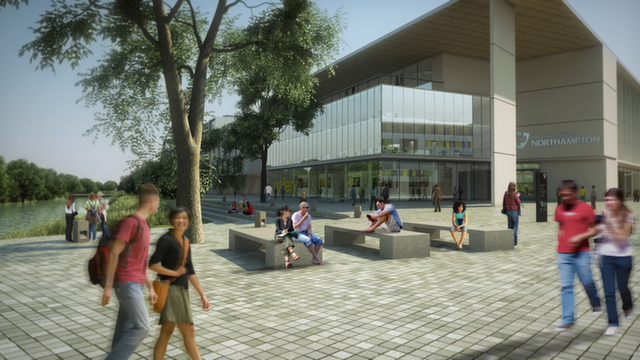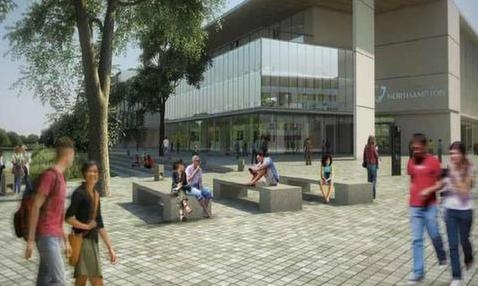What your campus development says about your university
Effective communications and active engagement helps in so many ways
Planning a new campus is an exciting time for any university. It says a lot about a university’s commitment to its future and its investment in the facilities that it will need to achieve its full potential for decades to come.
But planning a new campus also says something else. It tells a wide range of people about the style and nature of your organisation as it embarks on such a major project. It tells students and staff how inclusive it is by involving them from an early stage to determine how their university will look in the future. And just as importantly it tells a local people how the university is as a neighbour. Is it open, engaging, listening and inclusive? In short, is their local university a good neighbour?
This is important for many reasons. From a formal planning point of view you have to demonstrate that you have actively engaged with your local community. Your students and staff are one community. But your neighbours are just as important. When your planning application is finally submitted, after many years and months of hard work, one element upon which you will be judged is the extent to which you have gone out of your way to hear the views of local people and responded to their issues, concerns and ideas.
Your Statement of Community Involvement, which will form part of your planning application, will need to show a professionally planned community engagement programme, agreed at an early stage of the project and delivered over the many months when the project is developing into a firm proposal to submit to the planning authority. Failure to demonstrate appropriate community engagement can count against a planning application when officers are writing their report and councillors are making their decision.
And in a less formal way community engagement from an early stage has great benefits for the success of your new campus proposal. The active input from a range of people from outside your professional team who have a genuine interest in the development sometimes throws up some interesting ideas. But more importantly they challenge your professional team, pushing them to explain their thinking and justify their ideas. And this all adds to the creative momentum that shapes the final design.
There is another benefit of running a professional community engagement programme right from the start. It helps you get over the difficult bits. If you start to develop positive relationships with key people in your local community, involving them at an early stage in your project, listening to their views, taking on board their issues, then you create a positive atmosphere of trust which is a valuable asset when problems arise. You can discuss things calmly with them. They are prepared to trust you, more than they would if there is a “them and us” relationship.
On major projects we like to establish early on a local community forum as a way of developing this relationship. We bring together community leaders including councillors, chairmen and women of residents associations, local vicars, police and head teachers, indeed, anyone who has a genuine claim to represent a local community or a key role in that community. The forum meets regularly to allow the developer to update them on progress, answer their questions and discuss specific topics that they themselves have chosen in advance. It is very much the community’s forum. And over time relationships develop, barriers break down, and an atmosphere of trust arises. And when something difficult comes up you can take it to them in a calm and considered way to discuss it and see how to resolve it.
The community forums, and a wide range of other communication and engagement measures, are ways of involving local people. The important thing is to use these communication channels, not just to tell people what is going on, but also to engender a sense of pride in what is planned. Universities as developers are not the same as most other developers. You are not building houses to sell, make a profit and move on. You are building your future and enhancing an asset of which everyone should be proud. Local people should relish the fact that their local university is prospering and growing. They should want to be part of it and take pleasure in watching the continuing success of a cherished local institution.
 There is no question that if you can develop from the start that feeling of local pride amongst the local people who count as decision makers and opinion formers, then they will support you during the difficulties that inevitably arise when details are considered.
There is no question that if you can develop from the start that feeling of local pride amongst the local people who count as decision makers and opinion formers, then they will support you during the difficulties that inevitably arise when details are considered.
But as well as being legally necessary and practically helpful, good and early community engagement on campus development projects has a wider benefit to a university. It says something about the nature and spirit of the university. All universities need to work with their local communities, local authorities and local opinion formers. Problems with students in the community, problems over parking and public transport and a whole range of issues are easier to deal with if you have developed trusting relationships. The way in which you manage a campus development will play a major role in establishing this.
So what do you need to do? Well, start early is the first tip. Plan your communications and engagement programme right from the start and integrate it into your professional team’s timetable. Then identify your different audiences, both internal and external and prioritise them so you focus your efforts and resources in the most effective ways.
Now you have to determine your messages. What is the main thing you want to say about your development? What are your three key messages? Because if you get these right at the start, then as your team grows larger everyone will be saying the same thing and a clear, consistent message gets across.
And now, how to you deliver those messages? What supporting materials do you need? What web presence? What media are important, both locally and maybe nationally or even internationally?
But then there is the most important thing. How do you actively engage people rather than just speaking at them? How do you get people to become involved and start playing a positive role in the development of the project? Community forums, public exhibitions, group presentations, focus groups. All these are part of the mix.
Communicating effectively, engaging actively and building relationships that can be maintained over many months and years are vital to get a positive outcome to your planning application and to smooth the way during construction. But just as importantly they say something positive about your university that can ensure that you are perceived as a valued asset in the local community. And that can’t be bad.
 Paul Barnes is Public Affairs Director of Communications Management, a communications and engagement agency that specialises in supporting the education sector. Communications Management has provided support for campus developments including Cambridge University’s North West Cambridge development, Northampton University, and the University of East London. www.communicationsmanagement.co.uk
Paul Barnes is Public Affairs Director of Communications Management, a communications and engagement agency that specialises in supporting the education sector. Communications Management has provided support for campus developments including Cambridge University’s North West Cambridge development, Northampton University, and the University of East London. www.communicationsmanagement.co.uk
Paul Barnes has been an advisor to the British Property Federation, the Crown Estate, Westminster Property Owners Association, Boots Property and the National Trust. He has led community engagement programmes for projects such as the Crown Estate’s redevelopment of Regent Street, Battersea Power Station, Tate Gallery and the New National Stadium at Wembley.


